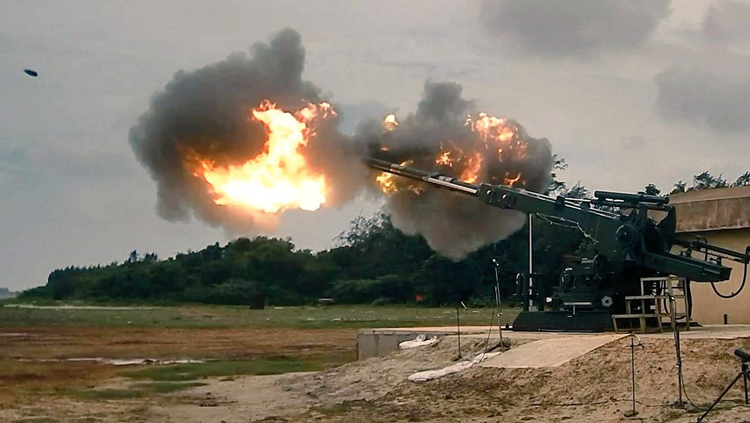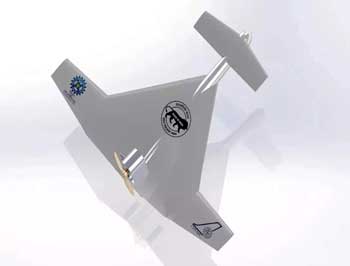INDIAN ARMED FORCES CHIEFS ON OUR RELENTLESS AND FOCUSED PUBLISHING EFFORTS

The insightful articles, inspiring narrations and analytical perspectives presented by the Editorial Team, establish an alluring connect with the reader. My compliments and best wishes to SP Guide Publications.

"Over the past 60 years, the growth of SP Guide Publications has mirrored the rising stature of Indian Navy. Its well-researched and informative magazines on Defence and Aerospace sector have served to shape an educated opinion of our military personnel, policy makers and the public alike. I wish SP's Publication team continued success, fair winds and following seas in all future endeavour!"

Since, its inception in 1964, SP Guide Publications has consistently demonstrated commitment to high-quality journalism in the aerospace and defence sectors, earning a well-deserved reputation as Asia's largest media house in this domain. I wish SP Guide Publications continued success in its pursuit of excellence.
- Operation Sindoor: Resolute yet Restrained
- India’s Operation Sindoor Sends a Clear Message to Terror and the World – ‘ZERO TOLERANCE’
- Japan and India set forth a defence cooperation consultancy framework, talks on tank and jet engines
- Terrorist Attack in Pahalgam in Kashmir: Unfolding a long surgical war against PAK
- Lt General Pratik Sharma takes over Command of Indian Army's Northern Command
More Howitzers, New Kamikaze Drone
Indian Army is upgrading its firepower, with several acquisitions in the pipeline, including the 155mm/52 Caliber Advanced Towed Artillery Gun System (ATAGS) and Kamikaze drones
 |
The Author is Former Director General of Information Systems and A Special Forces Veteran, Indian Army |

Most of the artillery of the Indian Army at present mainly consists of 130mm field guns, which are gradually being upgraded to 155mm under Project 'Sharang'. Budgetary constraints necessitate that procurements are carried out in batches. The Army is in the process of upgrading its artillery firepower with several acquisitions in the pipeline. This also includes processing the contract for the 155mm/52 Caliber ATAGS. Such procurements are viewed as a strategic move to bolster indigenous defence manufacturing capabilities and enhance the Army's artillery firepower.
In the last decade, four contracts have been concluded for the procurement of a 155mm howitzer. These Gun Systems have already been inducted and more Regiments are being equipped with these guns. The Indian Army has already issued a tender for buying 307 Advanced Towed Artillery Gun Systems (ATAGS) along with one for finding a mounted gun system for its requirements along borders with China and Pakistan.
The Army has issued a tender for acquiring 400 next-generation artillery guns, with a potential increase to 1,200 as older equipment is replaced. Top contenders for the artillery procurement include Larsen & Toubro, Bharat Forge, and Tata Advanced Systems Ltd.
Now media reports of August 17, 2024 have stated that the Indian Army has issued a tender for acquiring next-generation artillery guns to be designed, developed, and manufactured domestically. In the initial phase, the Army's projection is to procure 400 howitzer systems, with the demand expected to increase to around 1,200 as older equipment is replaced.
The tender mandates that the guns be designed in India with more than 50 per cent indigenous content based on the contract value. Private defence manufacturing companies that have invested significantly in developing artillery systems in recent years are keen on developing the new towed gun system under the ₹7,000 crore procurement project.
The Indian Army's Regiment of Artillery is looking to use the expertise of Indian Industry to produce a 155mm/52 calibre Towed Gun System, which will be lighter, versatile and cater for future technological advancements. According to a military official, "A tender for buying 400, 155mm 52-calibre towed artillery gun systems (TAGS) along with towing vehicles from Indian firms under the Buy Indian-IDDM category has been issued. The firms who have received the tender include local defence majors Bharat Forge, Larsen and Toubro, Adani, and Ordnance Factory Board.”
According to another report, the top contenders for the above project include Larsen & Toubro, Bharat Forge, and Tata Advanced Systems Ltd. Larsen & Toubro has already supplied K9 Vajra self-propelled artillery guns to the army. Bharat Forge and Tata Advanced Systems Ltd have developed the Advanced Towed Artillery Gun System (ATAGS) in collaboration with the Defence Research and Development Organisation (DRDO).
Indigenous kamikaze drones developed by the National Aerospace Laboratories (NAL) have a range of 1,000 km and can navigate using India's NAViC system, even in GPS-denied environments.
The Army wants the guns to be lighter in weight and easier to deploy in high-altitude areas like the older Bofors guns. The Army is seeking higher automation and accuracy compared to the current systems in service, as well as the ability to fire a wider range of specialised ammunition, keeping the future battlefield in mind. The Indian Designed, Developed and Manufactured howitzer would mean that it would be totally Indian in all ways. The procurement process is part of the Army plan for Mediumisation with indigenous guns and is likely to be completed by the year 2042. This acquisition of advanced artillery systems is a significant step in the modernisation of the Indian Army's infrastructure, laying the groundwork for future advancements and increased self-reliance in India's defence technology.

Concurrently, newspapers of August 14, 2024 have reported that the National Aerospace Laboratories (NAL) has unveiled a fully indigenous, "kamikaze" unmanned aerial vehicle (UAV) engineered to deliver lethal precision. Embodying the future of aerial warfare, these drones are powered by a homegrown 30-horsepower Wankel Engine, have an impressive range of 1,000 kms, a wingspan of 3.5 meters, a length of 2.8 meters, and have a payload capacity of 25 kgs. These indigenous kamikaze drones are capable of reaching speeds of up to 180 km/h.
Kamikaze drones have already proven their mettle in modern conflicts, including the US-Russia war in Ukraine, as also the Israel-Hamas, Israel-Houthi and Israel-Hezbollah conflicts. These lethal drones can loiter in target areas for extended periods, awaiting commands from human controllers to strike with precision. Deployable in swarms, they can overwhelm enemy defenses and radars, ushering in a new era of warfare. With an endurance of nine hours, these NAL drones can hover over target areas, awaiting the perfect moment to strike. Equipped with the Indian NAViC system, they can navigate and acquire targets even in GPS-denied environments, making them a force to be reckoned with.
Russia's use of fiber-optic drones in the Ukraine conflict has introduced a new dimension to drone warfare, immune to electronic jamming but limited in mobility.
An interesting new development in drone technology has come to light in the war in Ukraine. According to a report in Business Insider, Russia is using wired fiber-optics drones; which cannot be jammed and are immune to electronic warfare. The Russian modified drones look to be guided by fiber-optic cables. Some video clips of these drones showing attacks on Ukrainian forces in the Kursk region have been shared via open-source intelligence accounts on social media.
The advantage is that the fiber-optic wire preserves a stable connection, making a drone impervious to electronic warfare, like radio jammers mounted on military vehicles. At the same time, the cable would potentially prohibit the drone's mobility, possibly restricting their use to certain types of missions and locations to prevent collisions or the wire getting tangled or broken. Also, the range from the target to the operator would need to be considered, as the wire limits how far the drone can fly. However, fiber-optic drones could be useful in specific situations, such as in environments with intense radio jamming, and may complement the use of radio-dependent unmanned systems.
The introduction of fiber-optics drone systems has brought a new dimension to drone warfare. This will start a new race in development and employment of drones and counter-drone systems.





